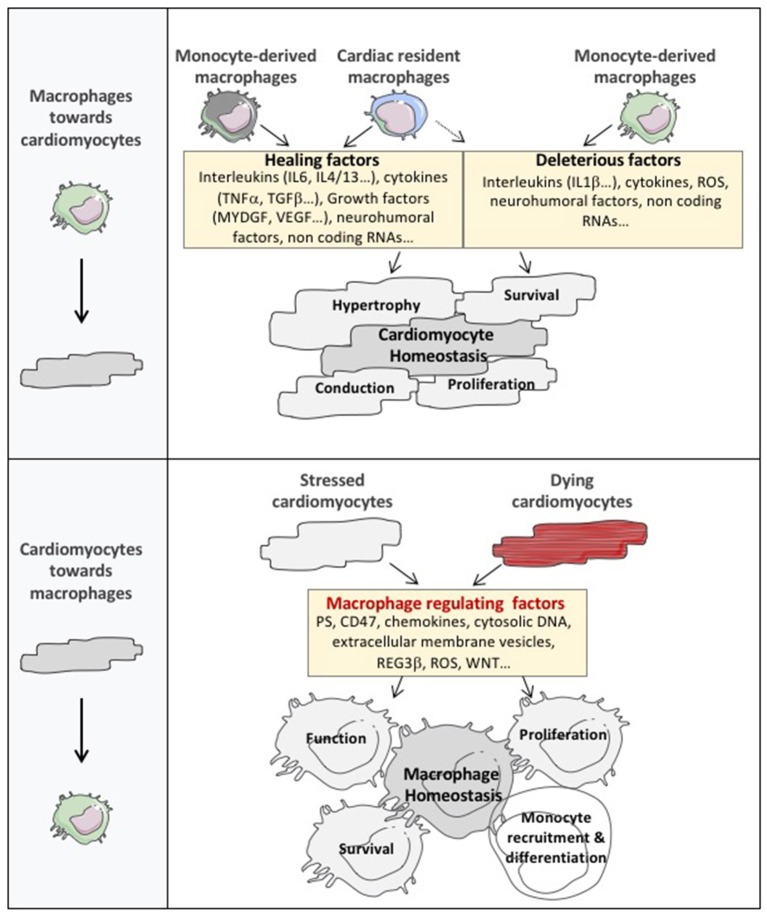Figure 2.
The cardiomyocyte and macrophage cross-talk in cardiac tissue. The expanded cardiac macrophage population plays an important role in the regulation of cardiac dysfunction by secreting factors that directly or indirectly alter cardiomyocyte homeostasis. Notably, considering their abundance, diversity, and phenotypic plasticity, macrophages represent a major reservoir of factors controlling cardiomyocyte hypertrophy, survival and contractility. Furthermore, cardiac macrophages exert non-canonical roles on cardiac conduction or cardiomyocyte proliferation by regulating action potential diffusion or cardiac cell cycle reentry. Nevertheless, the communication between cardiomyocytes and macrophages operates in both directions and cardiomyocytes dialogue toward cardiac macrophages to drive their number, function and phenotype through the release of a broad catalog of macrophage regulating factors. MYDG, myeloid derived growth factor; PS, phosphatidyl serine; ROS, reactive oxygen species; DNA, deoxyribonucleic acid; REG3β, regenerating islet-derived protein 3-beta.

